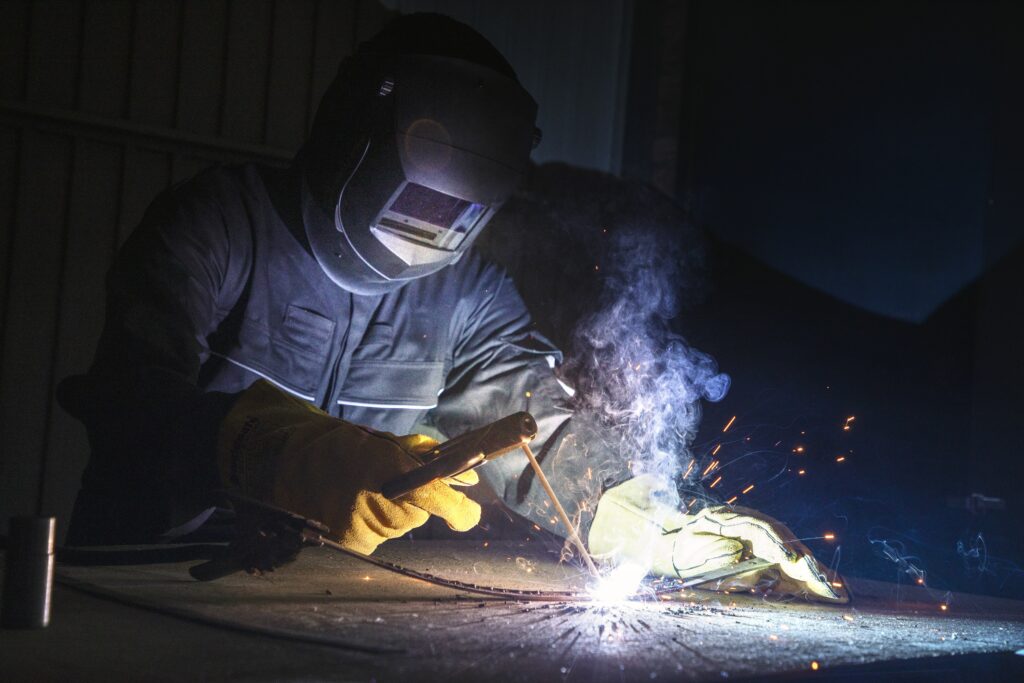Welding Technique
What is welding technique?
Welding technique is a collective term for various methods of welding, whereby materials are joined together by means of heat and/or pressure. Welding technique is used in many ways and requires specialist knowledge. After all, we cannot process all materials in the same way. We distinguish six main categories of welding techniques:
- Arc or electrode welding
- Electric resistance welding
- Gas welding
- Pressure welding
- Beam welding
- Other welding techniques
In addition to welding supplies such as gouging rods, welding pliers and cutting torches, we also offer other items at Vlamboog that you can use while welding. Think, for example, of special Markal markers, cable connections and ventilation systems. View our extensive range of articles related to welding technology in our webshop.
When to use which welding technique?
Each type of welding technique allows you to attach materials to each other in a different way. Therefore, the different techniques have advantages and disadvantages depending on the situation.
Arc Welding
Arc welding is a good technique when making shorter weld joints with thinner materials. The materials are heated by electrodes, melted, and then flow together. With arc welding you can join almost any material. The techniques covered by arc welding include MIG/MAG welding, TIG welding and plasma welding. Our range includes a wide selection of MIG and TIG welding products.
Resistance Welding
In resistance welding, the two surfaces you want to weld together conduct electricity. This is converted into heat, and by applying pressure, materials can be joined together. The process is useful not only for metals, but also in bonding plastics. Resistance welding is a fast and efficient welding technique, if done correctly. Spot welding, roll seam welding, projection welding and butt welding are all forms of resistance welding.
Gas welding
In gas welding we use a very hot flame. This is created through the supply of a gas mixture and can reach a temperature of more than 4900°C. Oxyfuel welding is a good solution, particularly for thick-walled installation work. For example, you can use this technique to weld pipes with a wall thickness of 3 mm together, but you can also use oxyfuel welding to cut pipes and tubes. With the cutting torches and nozzles from our range, you can start using oxyfuel welding yourself.
Pressure welding
As the name suggests, pressure welding involves attaching materials to each other by forcefully pressing them together. This can be done via both cold-pressure and hot-pressure welding, although we don’t often use the cold-pressure technique anymore. In hot-pressure welding, we not only press the objects against each other, but we also heat them. Hot-pressure welding includes the techniques of explosion welding, diffusion welding, ultrasonic welding and forging.
Beam welding
If you are looking for a technique which enables you to make high-quality connections in series, then beam welding is very suitable. In this method the materials are irradiated with a beam of particles in such a way that the material melts and flows together. Beam welding is used in, for example, the aircraft industry or machine building.
What do you need to weld safely?
Not only as an international trading house, but also as a manufacturer, Vlamboog has extensive knowledge about welding articles and personal protective equipment. Vlamboog has the right products in its assortment for every type of welding technique so that you can work safely. To be able to weld safely, you not only need the right welding pliers, but also the right protective equipment. This applies to both professional welders and hobbyists. The following protective equipment should not be missing when you start welding:
- Respiratory protection, such as a mask or air respirator
- Eye protection, such as safety glasses or special welding goggles
- Hearing protection, such as ear muffs or ear plugs
- Head protection, such as a bump cap or safety helmet
- Hand protection, such as special welding gloves or gloves that protect against electrical hazards
- Foot protection, such as safety shoes or boots





